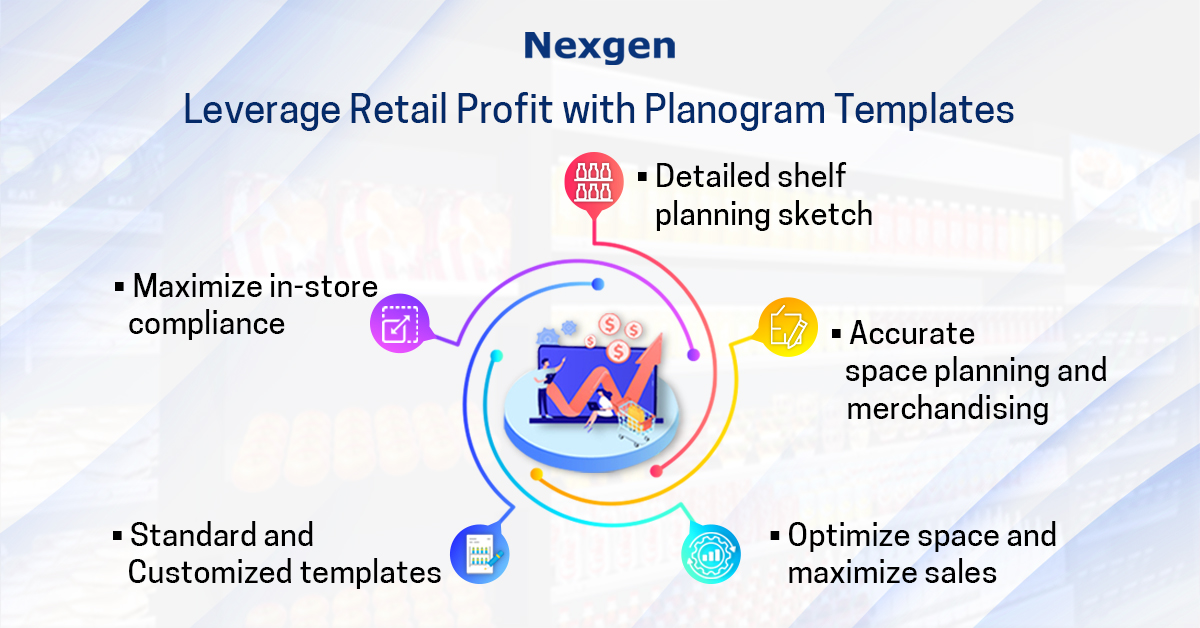Mostly in every retail store, managers take special attention to arrange their retail shelves aesthetically, so as to drive the customers into store. The tactic behind such a method is a well-presented shelf management system, that help satisfy consumer buying necessities. Today, retail space is limited and highly expensive. In that case, retailers will plan properly to maximize every inch of the available shelf space. So, how can a manager or store owner cleverly plan their shelf management process? A planogram is the answer to that question.
Planograms are visual merchandising tools that help retailers in optimizing space and maximizing sales. A retailer should not place products by his own choice or calculations. Such an activity can result in financial losses and affect brand loyalty. Therefore, when planning for a shelf management system, he should study customers, their behavior, trends in the market, competitor’s market, inventory management and more.

Creation of Planogram Templates
Planogram template is a detailed sketch that aids in retail shelf planning. The priority of retail shelf planning is to maximize storage space and illustrate the number of facings allotted for SKU. Before planning a planogram, retailers should have detailed real-time data regarding potential sales and demand for the product, a list of customers, consumer behavior details, technical data from google and advertising networks, predictive analysis and more. After analyzing such factors, retailers can create a planogram, by choosing the products, shelf size, dimension and shelf signage with a visual perspective insight. Planogram templates are of two types:
1.Standard templates: Standard templates are pre-designed templates, which helps retailer create planograms quickly by customizing them. It helps the retailer to avoid creating a new template for each specific time period. He can fix a standard template for executing the retail shelf whenever he wishes.
2. Customizable templates: Customizable templates are the templates created by the retailers to plan their retail shelf. It is an efficient way to plan according to his concepts, real-time data and according to the changing trends and consumer behavior aspects. It allows the retailer to custom design the planogram, by calculating width, height, depth, shelf and section numbers. Also, a retailer can decide about the product type, product category, number of products that he specifically wants on the shelf.
Overview of Nexgen POG
Nexgen POG is a cloud-based planogram software for designing merchandising strategies. It is a visual representation of retail shelves, to be placed in a retail store to increase sales. It has custom dimensions and pre-defined merchandising standards for proper shelf planning. It is equipped with other features like compliance analysis, bulk upload images, report analysis, labels or signage, autofill rules and more. Nexgen POG is a simple and extremely user-friendly shelf planning software that help retailers in improving their in-store
Get Your Free Trial Now!